Up Next
Cathleen Clarke Revisits Her Childhood in Lush, Dream-Like Scenes
The artist's New York solo debut "The Night Grows Long" is now on view at Margot Samel in Tribeca.
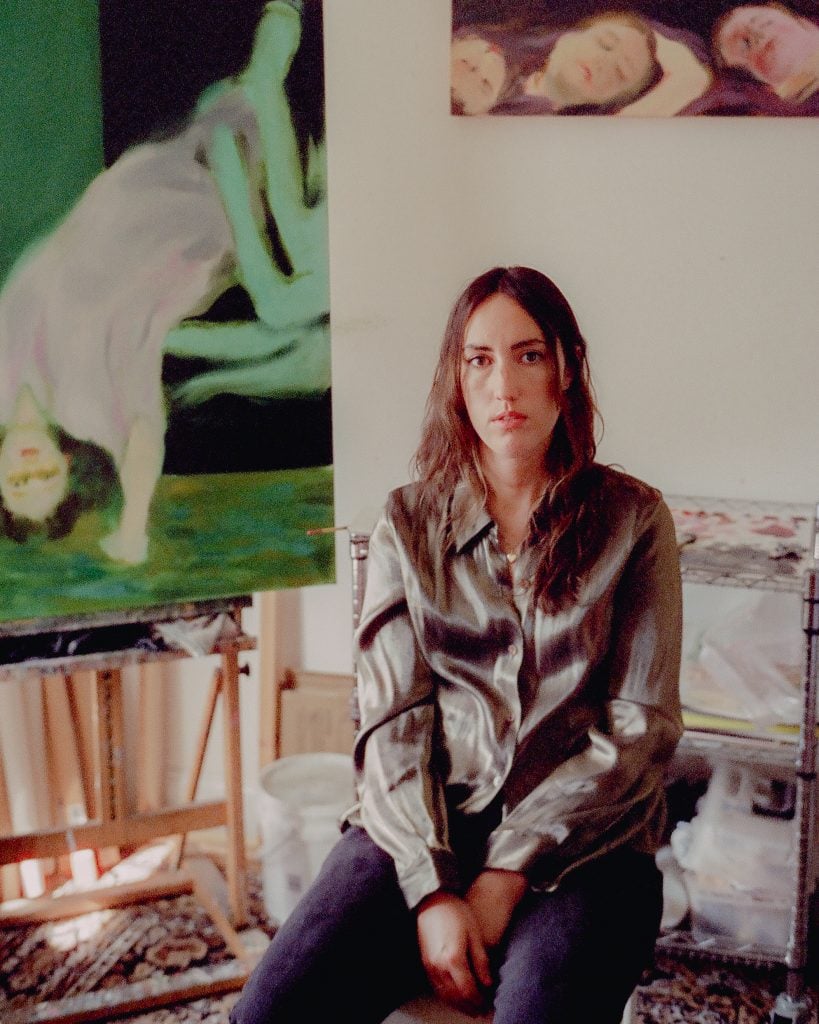
“We look at the world once, in childhood. The rest is memory.” Artist Cathleen Clarke recited the lines from Louise Glück’s poem “Nostos” as we walked through “The Night Grows Long,” her debut solo exhibition now on view at Margot Samel in Tribeca. Clarke had discovered the poem while preparing for the show and the words stirred a strange sense of resonance, reminding her of her own paintings, nocturnal visions, at once spectral and sweet, which now lined the gallery walls.
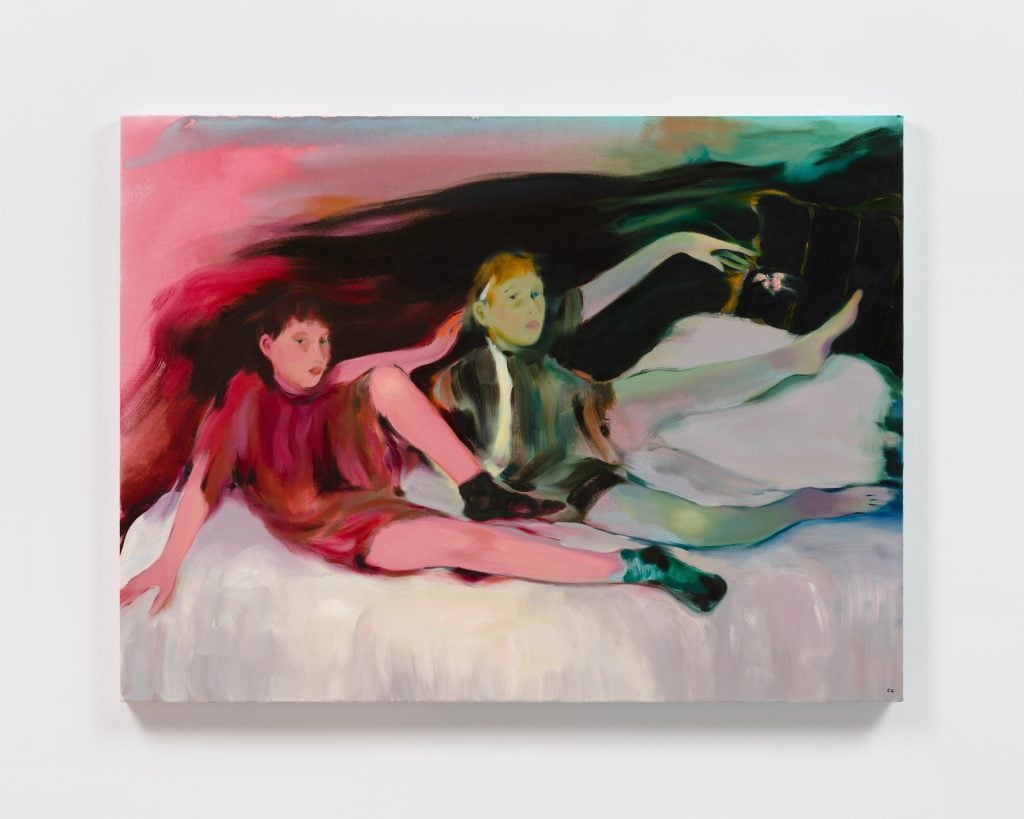
Cathleen Clark, Sometimes We Remember Bedrooms (2023–24). Courtesy of the artist and Margot Samel.
The strange slipperiness of our childhoods—and how they haunt our adult lives—Clarke has a compelling ability to capture. In one painting, Sometimes We Remember Bedrooms, two children, girls, pose on a bed. Each holds one arm languidly outstretched. The girls’ legs are kicked out across the bed in one direction and their movements form a dreamy choreography—a slow-motion jazz razzle-dazzle. One girl is painted in tones of pink, the other a pale green. Behind them, a dark shadowy swirl of paint hovers above, almost pulling at them. The painting, both in its palette and sense of performance, reminded me unexpectedly of Toulouse-Lautrec’s cabaret scenes. Clarke based this painting on a childhood photograph of her and her sister.
“We were sleeping over at our grandma’s apartment and playing dress up. I remember we put on earrings and were goofing around for the camera,” Clarke recalled. “My sister and I are a year and a half apart. We shared a bedroom our whole lives, forever it felt like, until we moved out. Our bedroom, and the way we decorated it, evolved with our age. When I made this work, I thought about all these empty rooms that we eventually leave behind and the stories that they hold.”
Now based in Brooklyn, Clarke (b. 1988) was born in Chicago, a middle child of four siblings. When she was 10 years old, her family moved from the city to a small farm in rural Illinois, where the family raised animals and lived without internet.
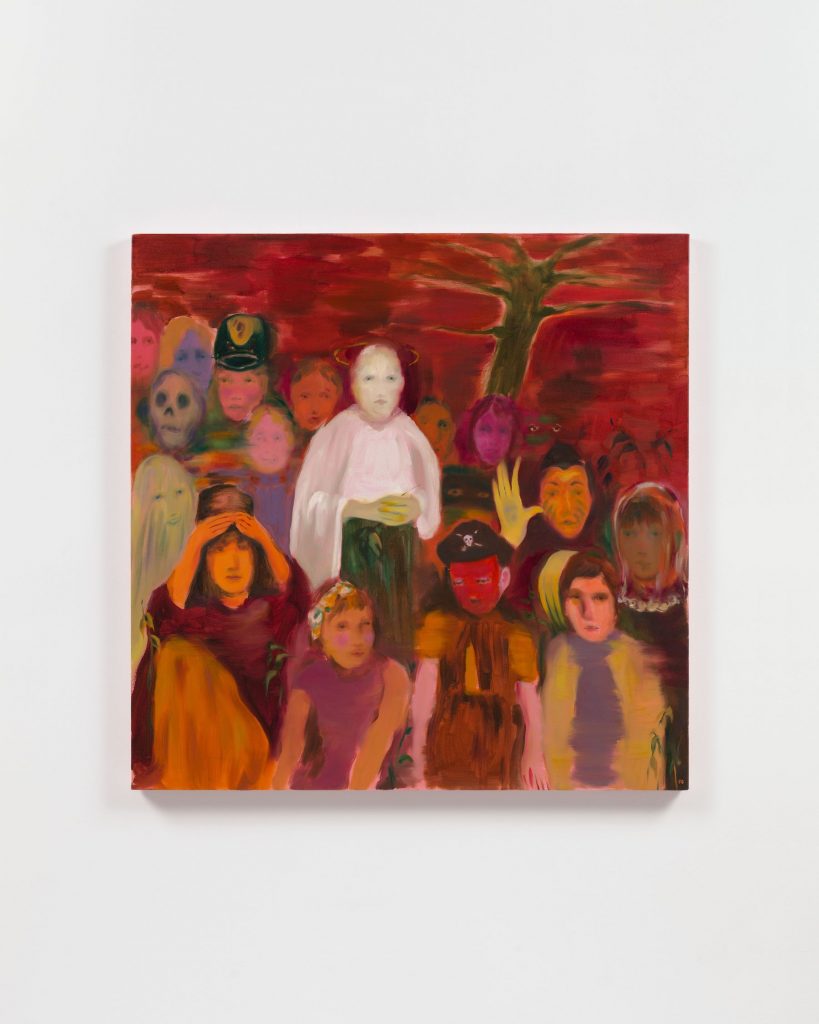
Cathleen Clarke, Hallows Eve (2023. Courtesy of the artist and Margot Samel.
“That time in the countryside shaped me as a future artist. My parents are creative, they love music and appreciate art. They would take us to the Art Institute of Chicago when we were small. Then when we moved out to what felt like the middle of nowhere, surrounded by corn fields,” she said. “That solitude and the isolation gave me a lot of space to just stay in my room by myself and draw. I had time to look inwards, which many people don’t.”
After graduating high school, Clarke took several odd jobs, including a failed stint as an airline stewardess, before moving to California to earn her BFA in Painting and Drawing at the Academy of Art University, San Francisco. She returned to Chicago, before moving to Brooklyn several years ago, finding work as a gallery assistant at David Zwirner and Grimm Gallery (where she met gallerist Margot Samel, who was working there at the time).
Clarke’s paintings, which have previously been shown in group shows with Samel and at New York’s Nathalie Karg, have a slinky sense of time, one that suspends reality in reverie-like disorientation before flinging you back into the present. In the painting Wrong Side of the Bed, a girl seems to spill onto the floor, her body a specter of light. “My family used to say, ‘Oh, someone woke up on the wrong side of the bed.’ I’m imagining she’s coming out of a bad dream, and she’s confused. Her frame of mind is altered and she’s almost being forced out of sleep by these phantom hands,” she explained.
The childhood Clarke conjures up isn’t saccharine, but mysterious, even frightening world with rituals all its own, which adult viewers recall in fleeting bursts of memory. Several paintings show children sleeping, or even, pretending to sleep, beside one another. “I like the idea of sleepovers—it’s this time where you’re sharing secrets, and dressing up, but also playing the Ouija board and games,” she said. “Some people fall asleep but then others keep going,” she said.
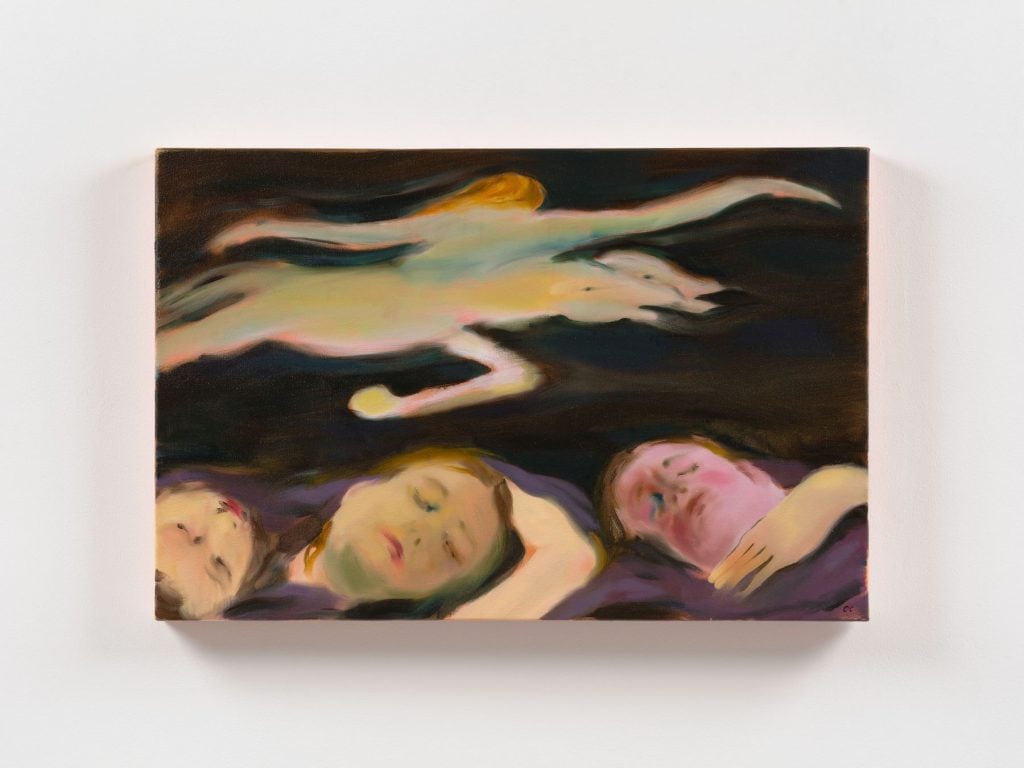
Cathleen Clarke, The Sandman (2023). Courtesy of the artist and Margot Samel.
While Clarke’s own family photographs and stories served as inspirations behind some of these paintings on view, her intentions with these works feel more searching and ambiguous than personal. Two large-scale paintings—Valentine’s Day (2023) and Hallow’s Eve (2023)—were based on family photographs given to the artist by a friend. “I might see an image that sparks an idea and it might not turn into a painting right away, but I just save it, and then later I’ll look at it again and decide to paint it,” she said. In Valentine’s Day, a cluster of children look out from the canvas with blank expressions, while holding red paper hearts in their hands. A dog peers out unexpectedly from one corner of the work. In Hallow’s Eve, children appear transformed, dressed in costumes—a pirate, an angel, perhaps a bride—but marked with an uncanniness that’s hard to place.
“Both of these holidays were really mostly celebrated at school when I was growing up and sort of anchored two sides of the year,” Clarke told me. “Halloween is particularly interesting to me as a holiday that’s preparing us to also come to terms with our mortality but also to become more comfortable with the mysteries in life and find lightness in something so serious.” Dress-up and a sense of play pageantry recur in these works and hint at an expansiveness of the childhood imaginative life that is enviable. “Costumes let children try on different identities, inhabit other selves,” Clarke added.
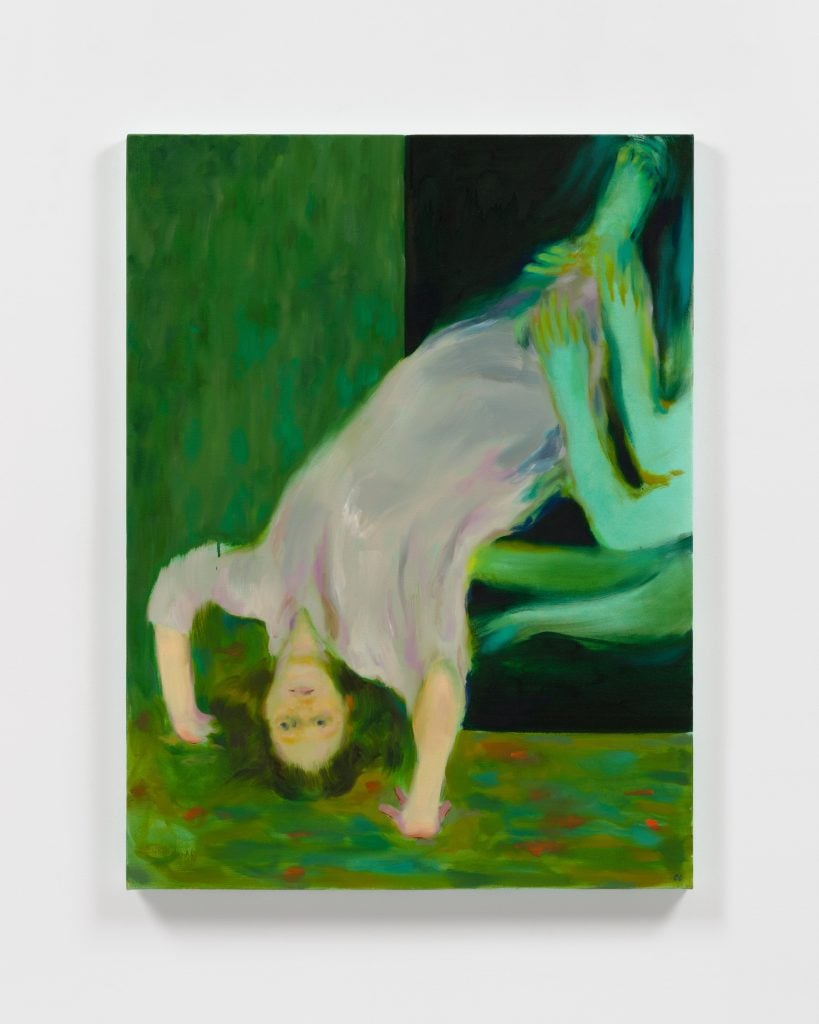
Cathleen Clarke, Wrong Side of the Bed (2023). Courtesy of the artist and Margot Samel.
If you spend some time with these works, it becomes obvious that film and art history are never far from hand, either. In the painting Girl Descending a Staircase (cleverly positioned by the gallery’s basement door), a nude woman walks down a staircase, her body haloed by other forms of herself. The painting references both Marcel Duchamp’s Nude Descending a Staircase and Gerhard Richter’s Woman Descending the Staircase, which is in the collection of the Art Institute of Chicago.
“I rewatched Twin Peaks this year and there’s this great scene of the mom just running down the stairs in slow motion,” said Clarke of the painting, “I wanted to paint some sort of figure coming on the stairs and this dark void. Maybe the figure behind her is an older self or a different version of her. It could be a girl sleepwalking in the middle of the night. Or she might be dreaming. It’s almost as if she’s transforming before our eyes.”
For Clarke, her paintings’ ambiguity is a kind of innocence, its own childlike potential.





